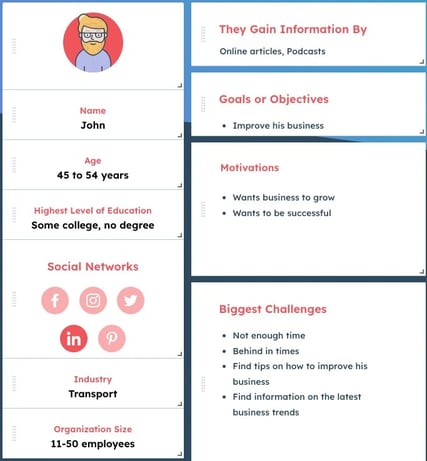Best practices for Facebook ad creatives
The creativity of your Facebook ads can make the difference between being ignored and capturing the attention of your audience. In this article, we...
Plan, activate and control media to hit targets with precision.
Turn data into smart decisions with advanced analytics and modeling.
Efficiency, governance and scale for agencies and teams.
![[Ebook] SEO + AI: eBook to Master AI Overviews and GEO](https://www.adsmurai.com/hubfs/MKT%20-%202025/WEB/Resources%20-%20Banners/HeaderEN_Ebook_SEO+AI.png)
[Ebook] SEO + AI: eBook to Master AI Overviews and GEO
Learn how to structure and distribute your content so generative models can understand it, trust it, and reuse it in their answers. A practical guide to compete and appear in AI Overviews and AI-powered assistants.
Discover more
In an increasingly globalized and diverse world, the ability to personalize messages is key to winning over our audience. Knowing how to creatively tailor our messages can set us apart from the competition. It will help us maximize the impact on our audience and establish meaningful connections with them.
In this article, we show the importance of tailored creative and how to use it to capture the attention of our audience.
TABLE OF CONTENTS:
It is very important to tailor messages to different audiences in order to establish an effective and meaningful connection with each target group. Each audience has different demographic and cultural characteristics, which means that their needs or preferences may often vary.
By tailoring these messages, we achieve greater relevance and impact with each specific audience, which helps us to capture their attention, generate more interest and achieve a positive response. Some of the reasons why it is important to tailor messages include:
Relevance: By personalizing messages, we are able to show the audience what they are interested in, what they understand their needs and desires. This helps create an emotional connection and makes it more relevant to them.
Greater impact: By using appropriate language, tone and communication style, we improve message comprehension and retention. Tailored messages have a greater impact on the audience and are more likely to generate a desired response.
Better user experience: By tailoring messages to the audience's preferences and characteristics, we create a more personalized and satisfying user experience. This helps us build a positive and lasting relationship with the brand.
Increased conversion: We improve the probability that users perform the action we want, such as making a purchase, subscribing or participating in an activity.
Competitiveness: In today's saturated market, personalization becomes a differentiating factor. Adapting messages to get closer to users' needs and desires helps to stand out and gain a competitive advantage.
Adapting messages to different audiences is key to achieve effective communication, increase relevance and build solid relationships with users.
To know your audience well and thus be able to adapt your messages effectively, it is important to follow a few steps:
Identifying the different audience segments: It is key to analyze your market and identify the different groups of audiences that exist. These segments can be based on different characteristics or even variables related to a specific niche.
Understand the characteristics and needs of each segment: Once the audience segments have been identified, research and analyze the characteristics and needs of each one of them. You can conduct surveys, interviews, market research... to gather relevant information about them.
Create a buyer persona: A buyer persona is a fictitious representation of the ideal customer within the audience segment. Based on the information gathered, create a detailed profile that includes the different aspects. These profiles help to visualize and better understand each audience, which will make it easier to tailor the message.

Continuous research: The knowledge of your audiences evolves and changes over time. Therefore, it is essential to stay updated and conduct continuous research in order to keep up to date with your audiences.
In order to personalize your messages and adapt them to different audience segments, here are some recommendations:
Adaptation of the tone and style of communication: We must adjust the tone and style of communication to each audience segment in order to reach them effectively.
Use of relevant language and references: Use language appropriate for each audience, taking into account their educational level, slang or cultural terms.
Incorporation of appropriate visual and aesthetic elements: The visual presentation of your messages should also be adapted to each audience. Consider using attractive and relevant images, colors, typography and designs for each segment.
Remember that message personalization implies fully understanding each audience and adjusting your communication elements according to their characteristics and preferences. This will allow you to generate greater empathy, relevance and connection with your target audience, maximizing the impact of your messages and the effectiveness of your communication and marketing strategies.
By adapting your creative and messages using narrative techniques such as storytelling, you will capture attention and establish an emotional connection with your audiences. Here are some tips on how to apply storytelling in your tailored creative:
Identify the core story: It is important to define the story you want to tell. You must ensure that the story is relevant to your target audience and resonates with their interests and needs.
Know your audience: Before you start building your story, you must understand your audience. This will allow you to tailor the narrative and story elements to connect with them on an emotional level.
Create engaging characters: Develop characters that are realistic and that your audience can relate to. Make them deal with issues that resonate with your audience's experience.
Use a solid narrative structure: To be effective, a story must follow a well-defined structure. Present context and conflict, create tension and then resolve the situation or show how your product or service can help overcome challenges.
Use visual and auditory elements: Combine the power of storytelling with visual and auditory elements to enhance the impact of the creative.
Appeal to emotions: Make your audience feel identified, emotional or experience empathy.
Recuerda que el storytelling en tus creatividades adaptadas te va a permitir conectar emocionalmente con tus audiencias, lo que aumenta la probabilidad de que se involucren y respondan a tus mensajes.
As we have seen, adapting your creativity to your target is essential to create that connection. Here are some strategies you can follow to make that connection effective:
Develop multiple versions of the message: Create multiple versions of the message to suit different audience segments. This means adjusting the tone, communication style and approach for each group. Use the buyer persona profiles you have previously created to guide you in this process.
Use automation platforms and tools: They allow you to manage and distribute your content efficiently. You can use content management systems (CMS) that facilitate message personalization and segmentation. Also, there are marketing automation tools that help you send tailored messages through different channels.
Testing and optimizing personalized messages: Perform A/B testing to analyze the performance of your personalized messages. Test several versions of the message on different audience segments and measure responses.
Tracking and analyzing results: Use analytics tools to measure the impact of messages. Analyze metrics such as clicks, conversions and engagement. Track interactions and responses from each target group to gain valuable insights into your audience's behavior and preferences.
Creating adaptive content involves a strategic, data-driven approach. As you test and optimize your messages, you will win over more of your audience. Personalization is key to establishing a stronger connection and generating greater impact with your content.
Message personalization is very important to effectively target an audience. By adapting content to the needs and preferences of each person, we are able to establish a stronger and more meaningful connection. In this sense, there are several tips that can help you personalize messages in an effective way. Here are some tips on how to achieve this:
Know your audience: Research and understand your target audience. The better you understand your audience, the easier it will be to tailor your messages.
Use appropriate language: Tailor the tone and language of your messages to your audience. Use language that is understandable and relevant to them, avoiding words that may be confusing.
Personalize content: Tailor the content of your messages to be relevant and meaningful to your audience. Use examples, case studies or testimonials that relate to their reality and demonstrate the value you can give them.
Use your audience's preferred channels: Adapt your messages for each different channel and make them relevant to your audience.
Segment your audience: If your audience is diverse and composed of different types of audiences, consider segmentation to further personalize messages.
Listen and interact: Maintain open and active communication with them. Listen to their comments, questions and concerns, and it is advisable to respond in a personalized way.
Test and adjust: Experiment with various approaches and messages, and test to verify their effectiveness. Analyze the results and make adjustments based on the information gathered.
In conclusion, message personalization is a powerful tool for effectively targeting an audience. By taking into account their interests, needs and preferences, we can establish a stronger and more meaningful connection. In short, by applying these tips, a more impactful and successful communication can be achieved, generating greater engagement and loyalty from the audience.

The creativity of your Facebook ads can make the difference between being ignored and capturing the attention of your audience. In this article, we...

Digital advertising creativity continues to break boundaries, adapting to a constantly evolving technological and cultural environment. As we...

Nowadays the power to influence, persuade, and entice customers lies in the art of creating product ad creatives that resonate and captivate. Whether...